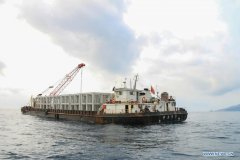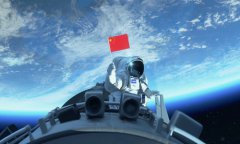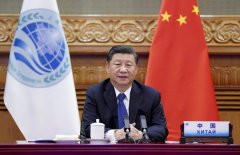California governor declares drought emergency in 2 counties
Gov. Gavin Newsom has declared a drought emergency in two Northern California counties as the state grapples with depleted water supplies after a dry winter
April 22, 2021, 1:01 AM
5 min read
Share to FacebookShare to TwitterEmail this articleFILE - In this July 8, 2014, file photo, is a sign alerting visitors to water conservation efforts at the state Capitol in Sacramento, Calif. Gov. Gavin Newsom has declared an emergency executive order in two Northern California counties in response to drought conditions affecting much of the state. The announcement Wednesday, April 21, 2021, affects Mendocino and Sonoma counties, where Newsom says drought conditions are especially bad. (AP Photo/Rich Pedroncelli, File)
SACRAMENTO, Calif. -- Standing in the dry, cracked bottom of Lake Mendocino, Gov. Gavin Newsom declared a drought emergency Wednesday in two Northern California counties where grape growers and wineries are major users, an order that came in response to arid conditions affecting much of the state and the U.S. West.
The declaration is targeted to Mendocino and Sonoma counties, where drought conditions are especially bad, rather than statewide, as some officials and farmers in the agricultural-rich Central Valley had hoped. But the Democratic governor said a broader drought declaration could come as conditions change.
California, which is now in its second year of drought, is bracing for another devastating wildfire season after a winter with little precipitation.
“Oftentimes we overstate the word historic, but this is indeed an historic moment, certainly historic for this particular lake, Mendocino,” Newsom said, standing where 40 feet (12 meters) of lake water was supposed to be. The lake is at about 40% of normal capacity.
About three-quarters of the American West is in what is called a megadrought, with critical waterways like the Colorado River and Rio Grande that supply millions of people and farms expected to have dismally low flows this year. The White House on Wednesday announced the creation of a working group helmed by the Interior and Agriculture departments to address worsening drought conditions in the U.S. West.
Last week, hundreds of farmers who rely on a massive irrigation project spanning the Oregon-California border were told they’ll get a fraction of the water they need as federal regulators attempt to balance agriculture with threatened and endangered fish species central to the heritage of several tribes.
In California, the two counties spotlighted by Newsom are part of the Russian River watershed, which is about 110 miles (177 kilometers) long. Lakes Mendocino and Sonoma are the primary sources of water for residents and commercial users like wineries, and together they provide water for about 600,000 people, said Grant Davis, general manager for Sonoma Water.
Beyond the drought declaration in the two counties, Newsom’s executive order allows California to prepare for expected effects of the water shortage statewide more quickly.
Though he did not declare a statewide drought emergency, the State Water Resources Control Board in March sent early warnings to 40,000 water rights holders urging them to start conserving. The board suggested that agricultural users reduce irrigation and seek other water sources and that people in cities and towns put in drought-resistant landscaping and replace household appliances with water-saving ones.
“If you’re in a different part of the state, you probably need to know that this will one day happen to you,” Karla Nemeth, director of the California Department of Water Resources, said of the drought declaration.
The department says this is California's fourth-driest year on record, especially in the northern two-thirds of the state. But Newsom said people in cities also are using 16% less water than they were at the start of the last major drought, which lasted from 2012 to 2016. That drought prompted then-Gov. Jerry Brown to impose broad restrictions on water use that affected nearly everyone in the nation's most populated state.
“We’ve barely been out of those drought conditions, and here we are entering back into these drought conditions,” Newsom said.
Farmers and leaders in the agricultural Central Valley are still hoping for a statewide declaration.







